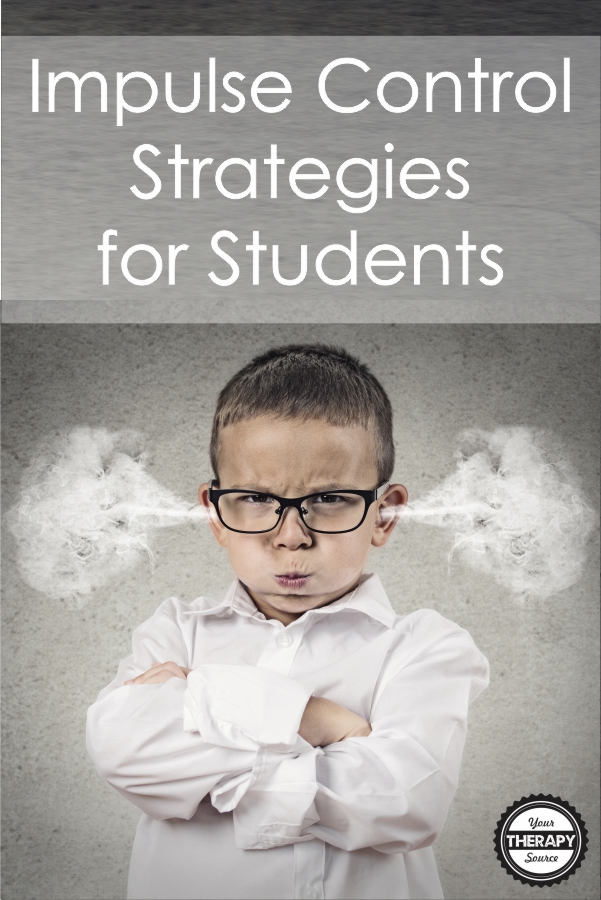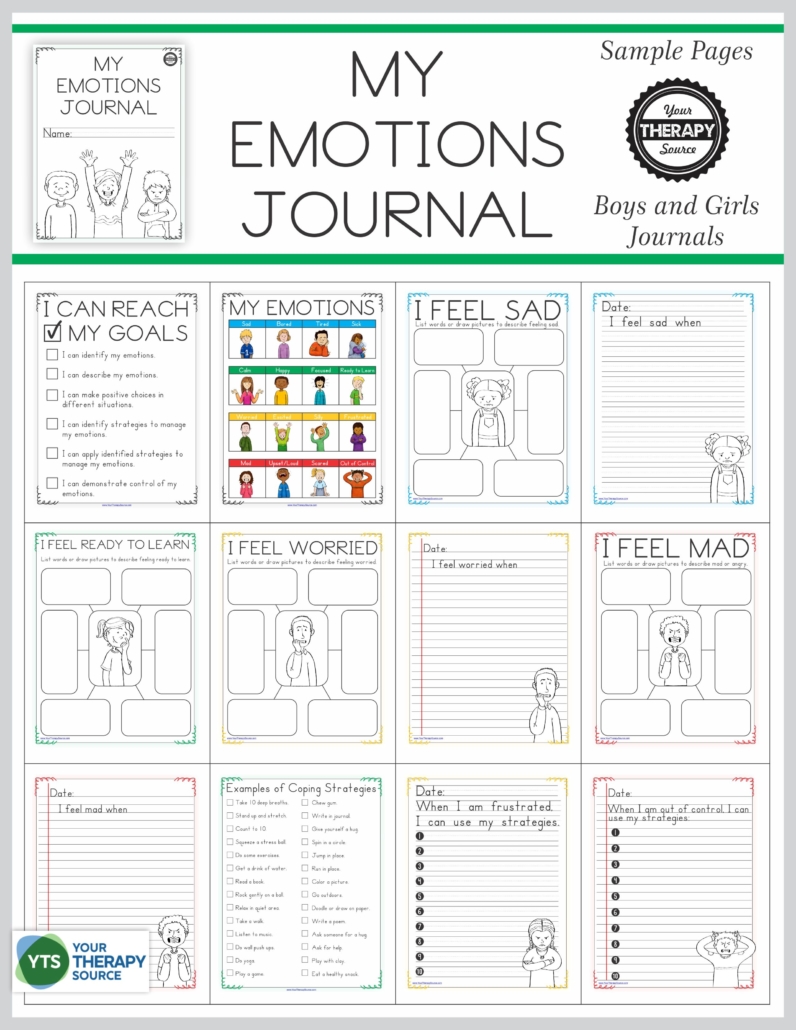Impulse Control Strategies for Students

Do you work with children who struggle with waiting, sharing or finishing tasks in a timely manner? Sometimes students have deficits in impulse control at school and at home. Educators, therapists and parents can teach impulse control strategies to help students succeed.
What Is Impulse Control?
Impulse control refers to the ability to think before acting and to forgo an immediate desire to wait for a later reward. For children, impulse control means developing social skills such as managing to wait politely for food to be prepared; learning to take turns and to share; knowing how to ask and to thank; remembering not to hit, yell, or bite when angry or frustrated. Impulse control is also associated with delayed gratification, which means that you can resist a smaller but more immediate reward in order to receive a larger or more enduring reward later. A growing body of literature has linked the ability to delay gratification, and therefore, make thoughtful, long-term choices, to a host of other positive outcomes, including academic success, physical health, psychological health, and social competence.
How can we help children with impulse control strategies?
Helping our children learn to control impulses is essential to social-emotional and academic competence. To help students use impulse control strategies, we need to provide them with three things:
- Compassion – being calm & caring for ourselves and others
- Accurate Mirroring – stating what is happening without interpretation, judgment, guilt, shaming
- Something TO DO to soothe, support, ground themselves – giving them an activity which helps them slow down and shift themselves
In other words, in addition to staying regulated ourselves, so we can hold a safe emotional space, we need to use our words to help them develop self-awareness and to give them tools to help them develop self-control and thus, self-confidence. Breathing exercises offer kids effective tools with which to redirect impulses and down-regulate their nervous systems out of fight or flight into reason, communication, and connection.

Examples of a Student After School Who Needs Help with Impulse Control Strategies
Your son is just home from school. Impulse control is an issue. He wants his video game which he is allowed for a limited time once a day, usually after dinner. You can see that he’s tired and stressed by his long day. You know the video game now will only dysregulate him further and make the evening more challenging. You have a conference call in 5 minutes so you cannot play something quiet with him yourself. You need to tell him no on the video but you don’t want him to lose control with his upset, which often happens.
Three Ways to Help This Child
Have compassion for him and yourself: I can see that you want to do something fun after a long day at school. And I wish I could do something fun with you right now but I have a call in 5 minutes and will be busy for a half-hour. After that, I would love to have some special time with you. In the meantime, while you’re waiting for me, you can – play catch with the dog, listen to music or an audio-story, or do a puzzle .
He insists emphatically that he needs his video game time now!
Accurate Mirroring: I hear that you really want to do the video game now instead of after dinner. But video time is after dinner and you can pick another option now or I’ll pick it for you.
He starts to escalate.
Give him a self-regulating tool or activity: I can see your feelings of disappointment getting stronger. Since you are working on not doing mean behaviors when you are upset or angry, I’ve got a new breathing exercise for you. You can use it to blow off steam rather than blow up at me. It’s called Hissing Breath. Try it and see if it helps you calm your feelings about playing after dinner instead of now.
Breathe in your nose a long, deep inhale. Now, breathe out your mouth making a small hiiiissssssssssssssing sound – like a balloon slowly losing air. Go super slow and try to make the hiss last a long time. I’ll count….. good… you hissed for a long time. Your face and body look more relaxed. Try it one more time, breathing in and then slowing hissing out all the air and any upset or anger. If it feels good, you can do it again or as many times as you need. You’ll know when you’re done.
All done? What do you notice about how you feel now?
How did the Hissing Breath help you? It helped me feel slower and softer.
Thank you for trying it. I hope you’ll use it whenever you want to help yourself calm down.
What are you choosing to do while I’m on my call?
Another option for an impulse control strategy: If your child remains escalated, teach him the the Five Senses Grounding Exercise.
Children can use this strategy after they learn and reflect about their five senses – sight, touch, listening, smell, and taste. There are two variations on how you can complete the five senses grounding exercise.
This self control strategy is from the complete 5 4 3 2 1 Grounding Technique – Stay Calm, Stay Safe, Stay Present packet that includes a 5 minute mediation for the children to listen to and guide them on the ability to manage their emotions.
The strategy can help children stay calm, stay safe, and stay present to prevent their emotions from escalating. Read more on the technique here or download the FREE PDF of the exercise below after you sign up for the weekly email and other announcements from Your Therapy Source.
Need More Help?
Do you need more impulse control strategies for students? Teaching children about understanding emotional regulation may help students with impulse control. This comprehensive set of Emotional Regulation Worksheets includes 4 different My Emotions Journals to help boys and girls identify and manage emotions and behaviors. Each journal includes 50 pages and they are available electronically immediately following payment.
Goals of the Emotional Regulation Worksheets for Youth:
- help children develop self awareness and self management skills essential to success in school and in life.
- guide youth to identify and manage one’s emotions and behavior.
- teach children how to apply decision making skills to deal responsibly with daily academic and social situations.
FIND OUT MORE ABOUT THE EMOTIONAL REGULATION WORKSHEETS.
Fun Games for Impulse Control
If your students or children have trouble focusing, settling down, staying on task, or dealing appropriately with their impulses this is a great game to try!
Here are 10 FUN self control games that require no preparation or equipment to practice and learn self-regulation skills!

Parts of this post was originally written by Leah Kalish.





